Surface Area and Volume Worksheets
Surface Area of Cuboids
Year groups: 7, 8, 9

Volume and Surface Area of Cuboids
Year groups: 7, 8
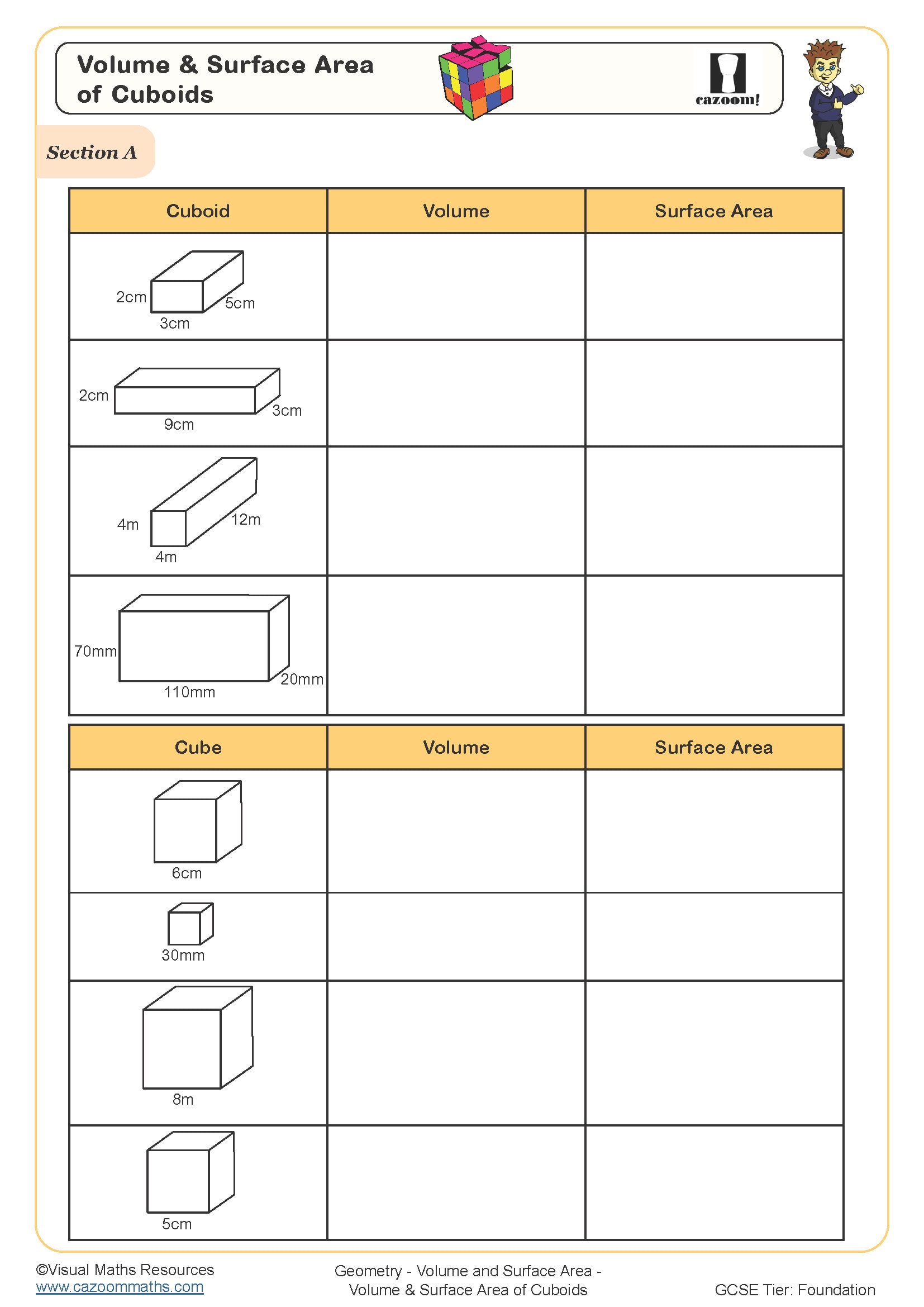
Volume of Cuboids
Year groups: 7, 8

Volume of Cuboids made with Cubes
Year groups: 7, 8
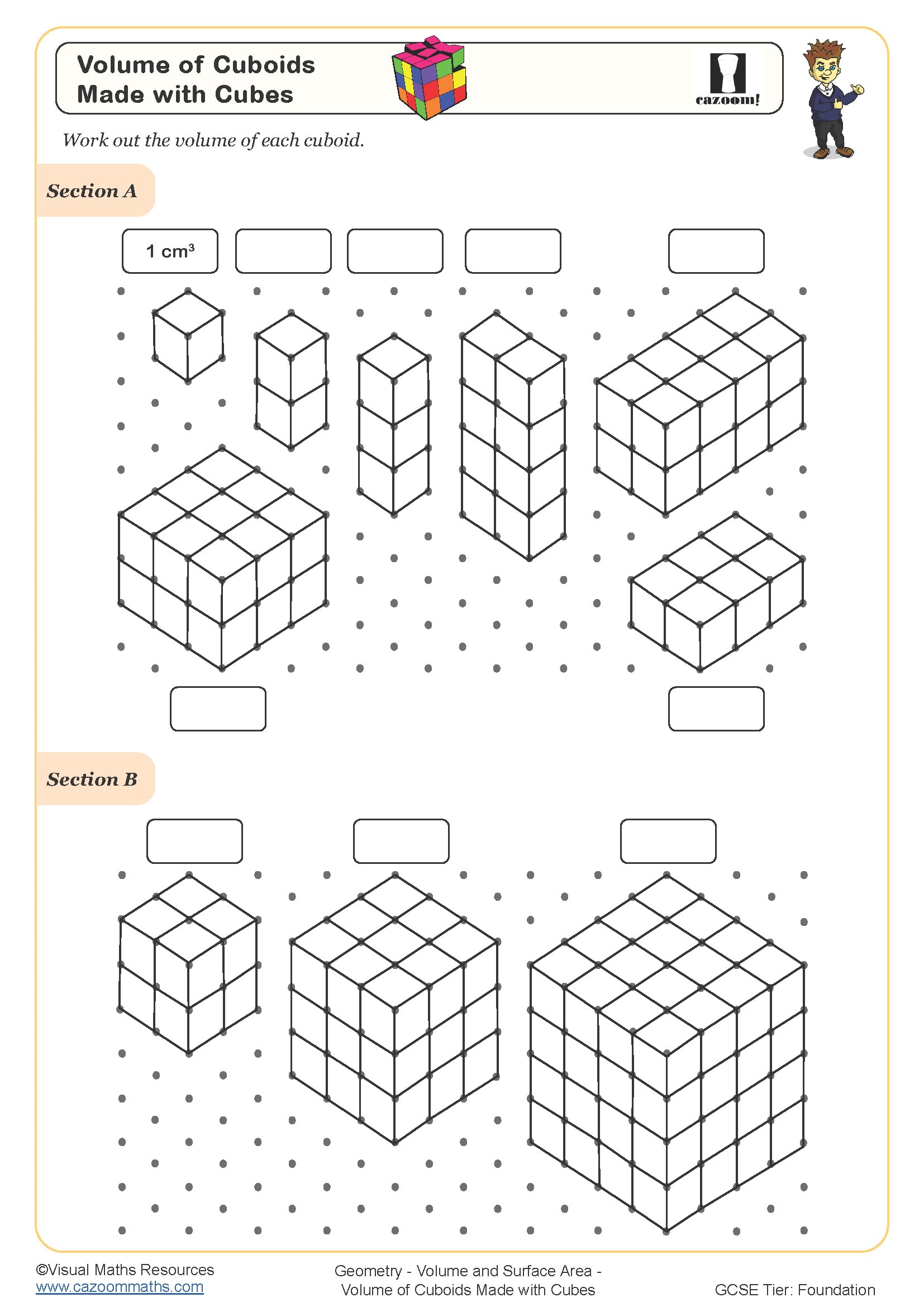
Volume of Prisms and Cylinders
Year groups: 8, 9
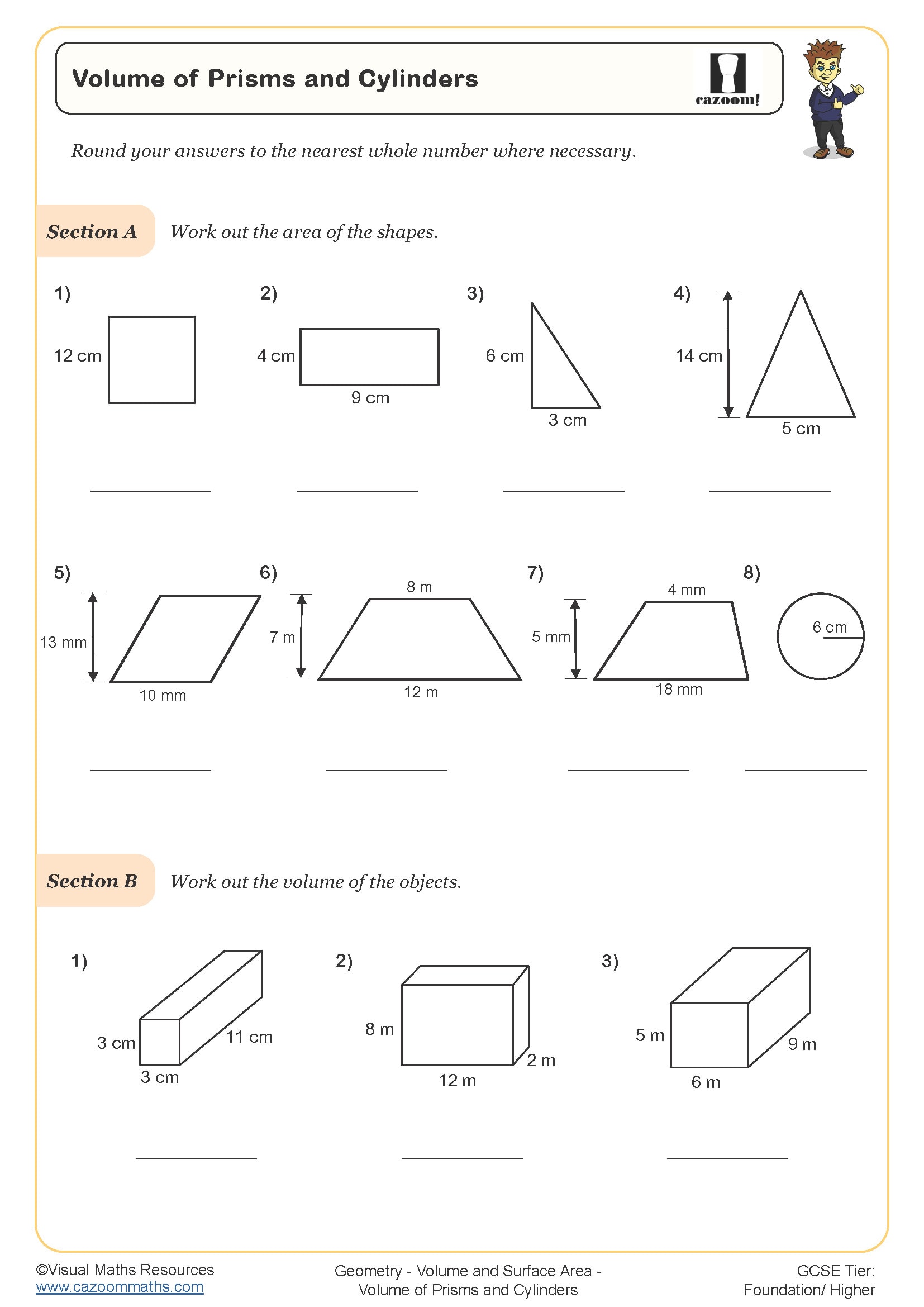
Frustums
Year groups: 9, 10
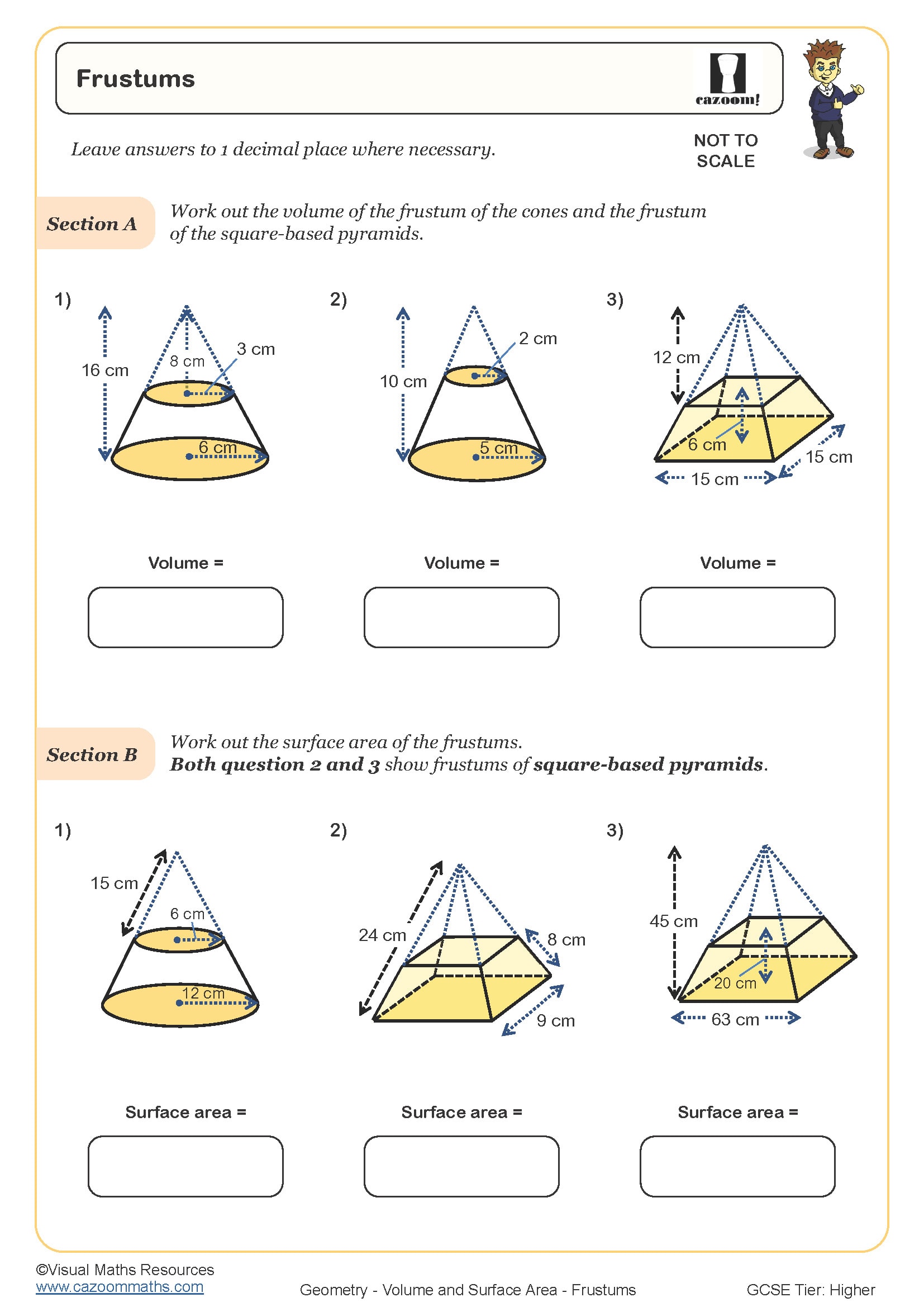
In Terms of Pi (C)
Year groups: 9, 10
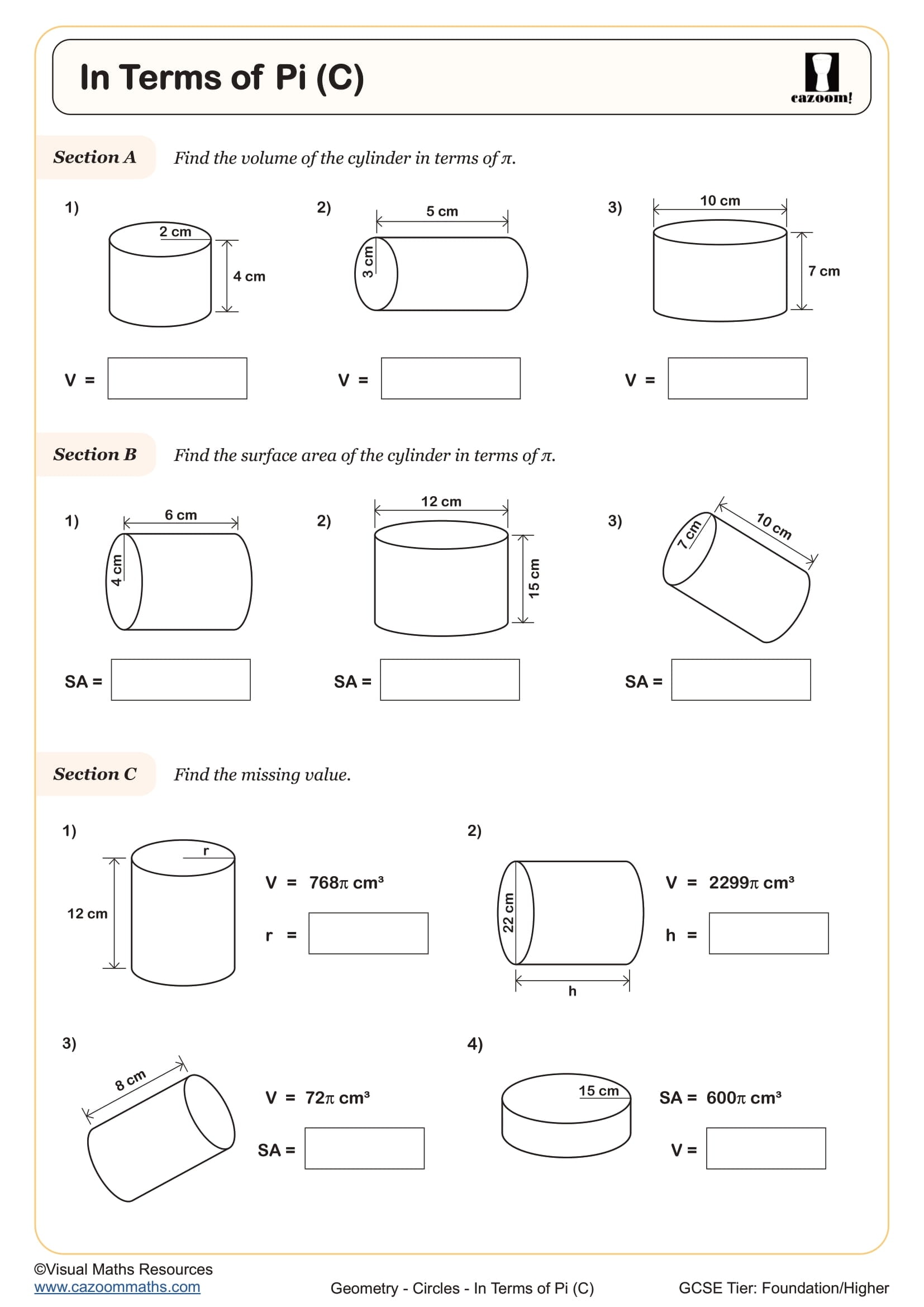
Recognising Prisms
Year groups: 9, 10
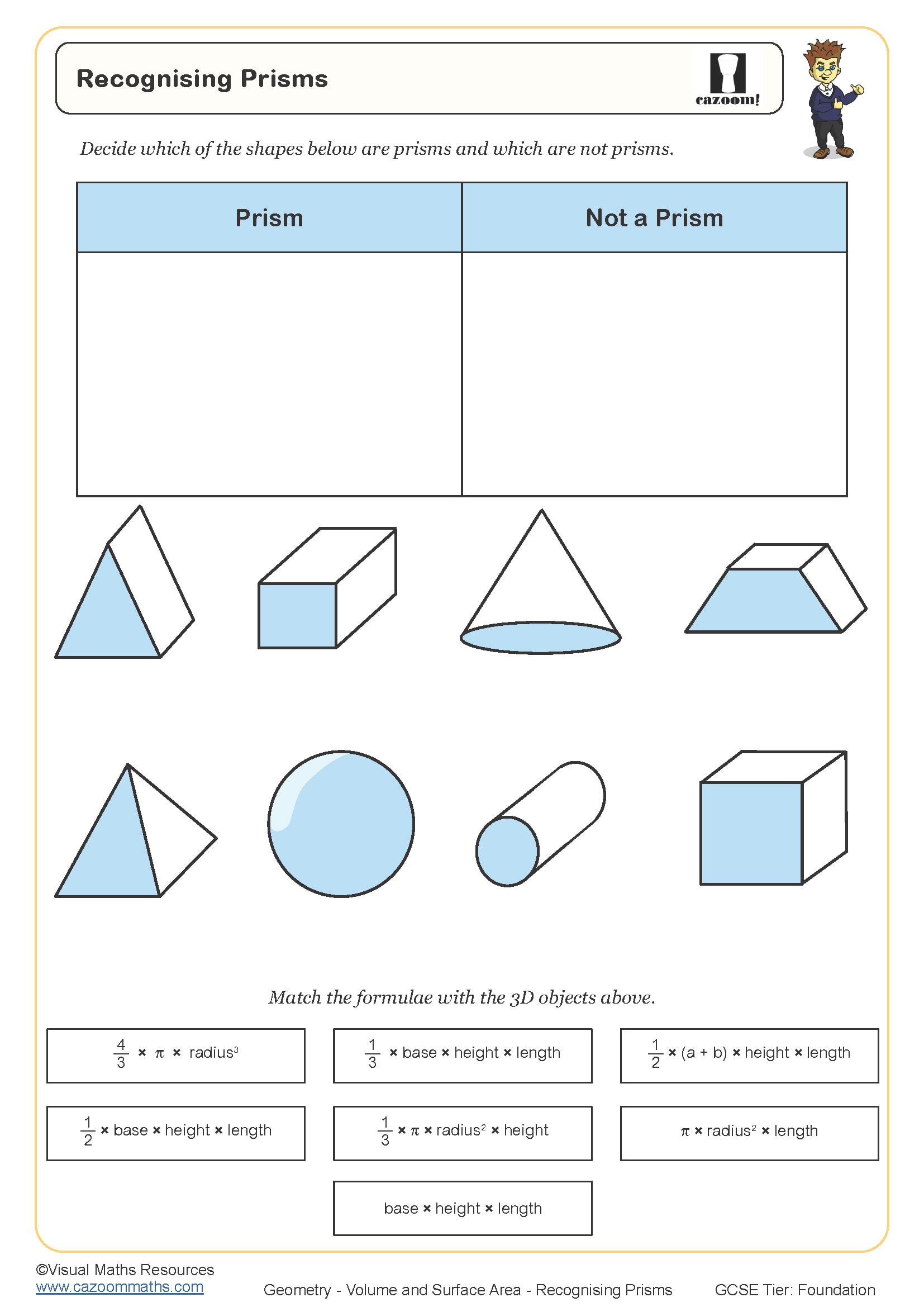
Surface Area of Cylinders
Year groups: 9, 10
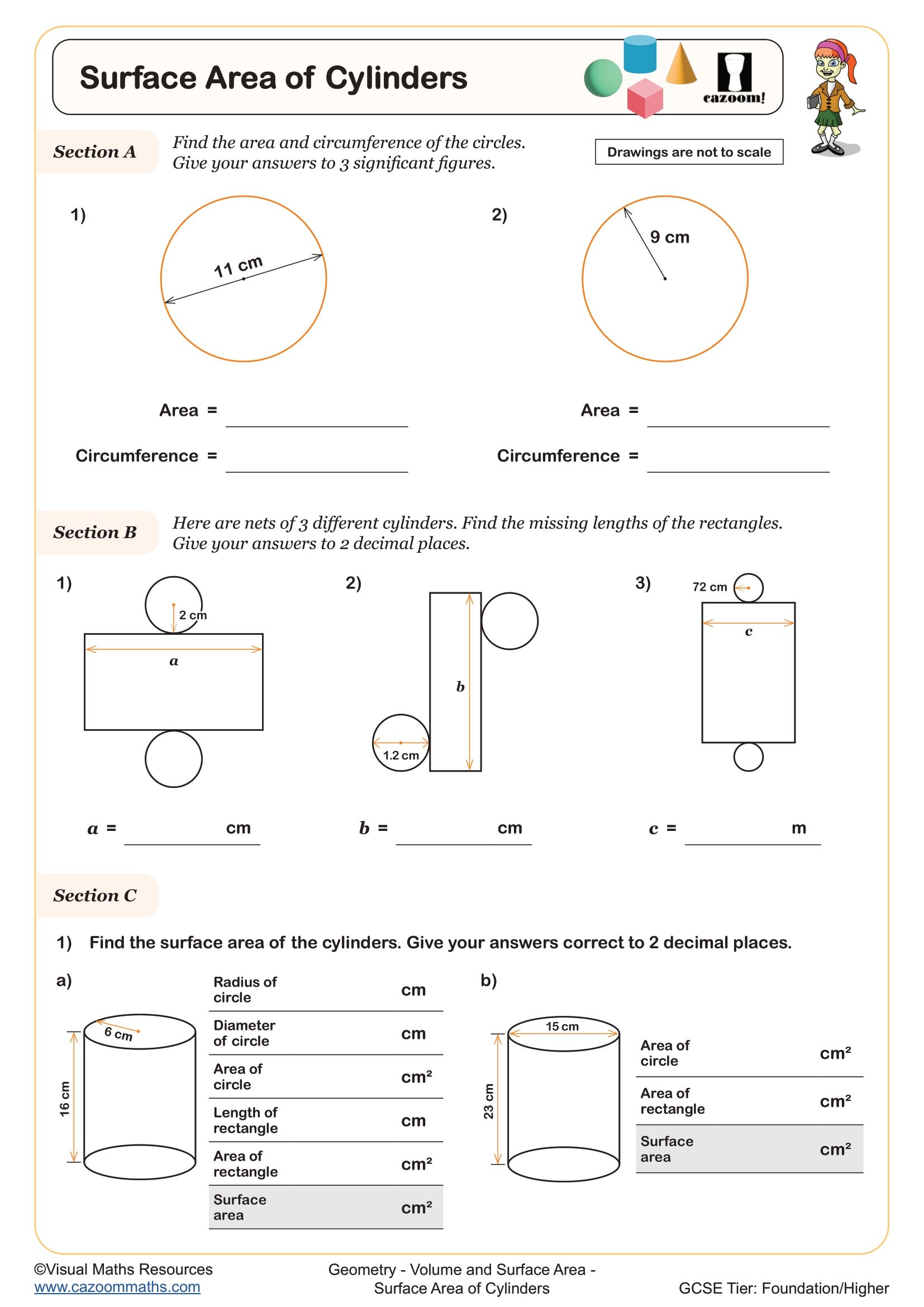
Surface Area of Prisms
Year groups: 9, 10
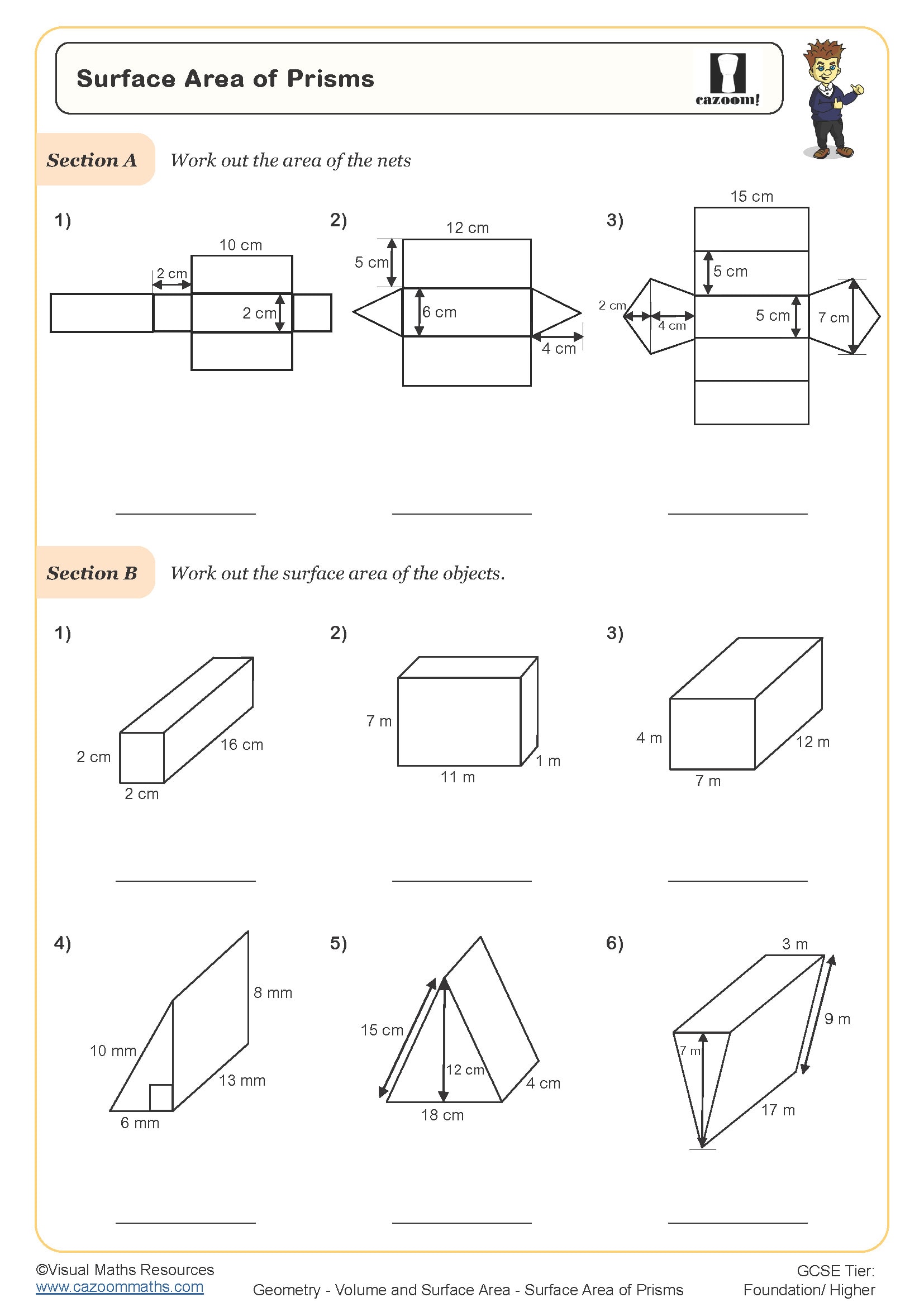
Surface Area of Triangular Prisms
Year groups: 9, 10
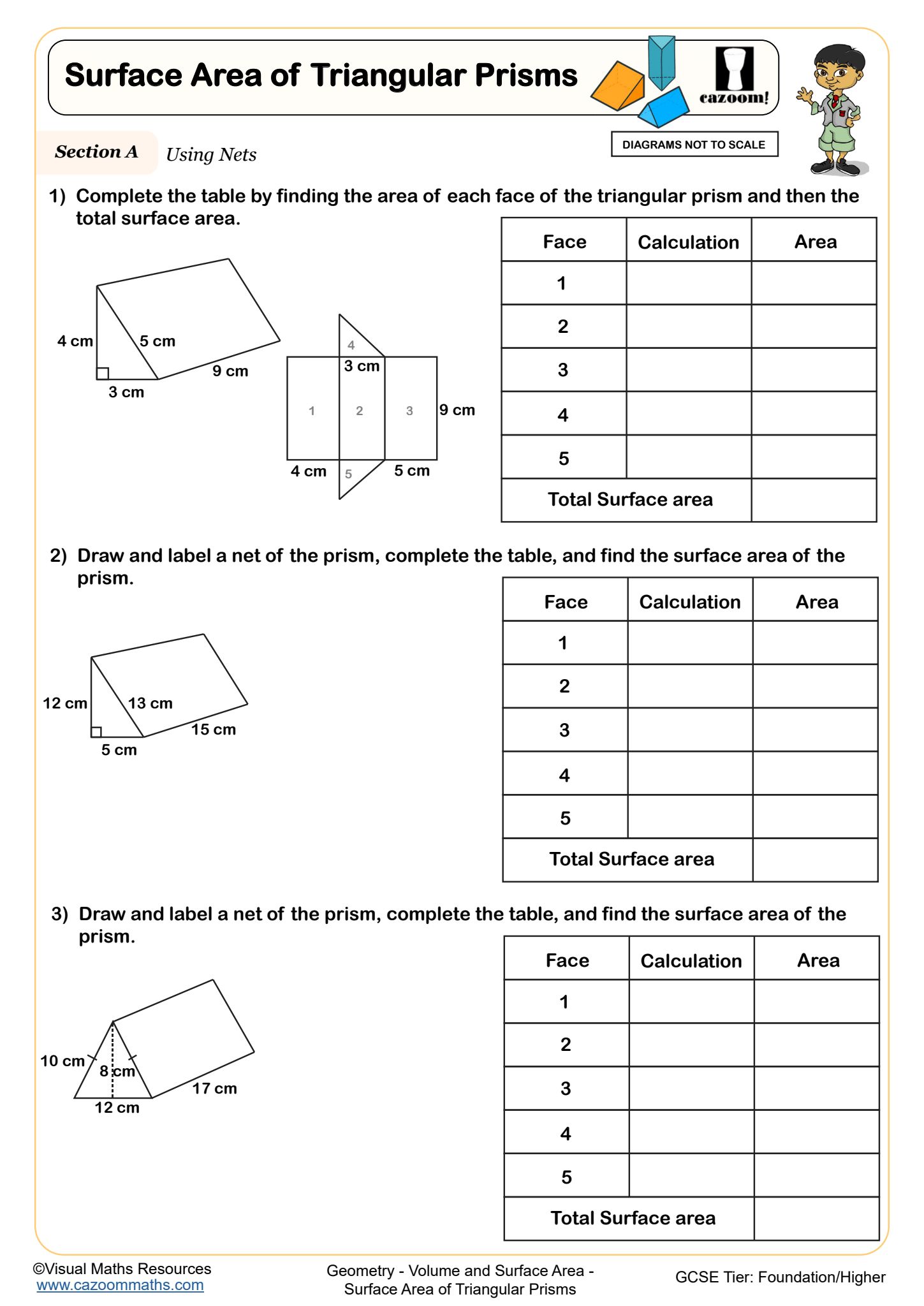
Surface Area- 'L' Shaped Prisms
Year groups: 9, 10
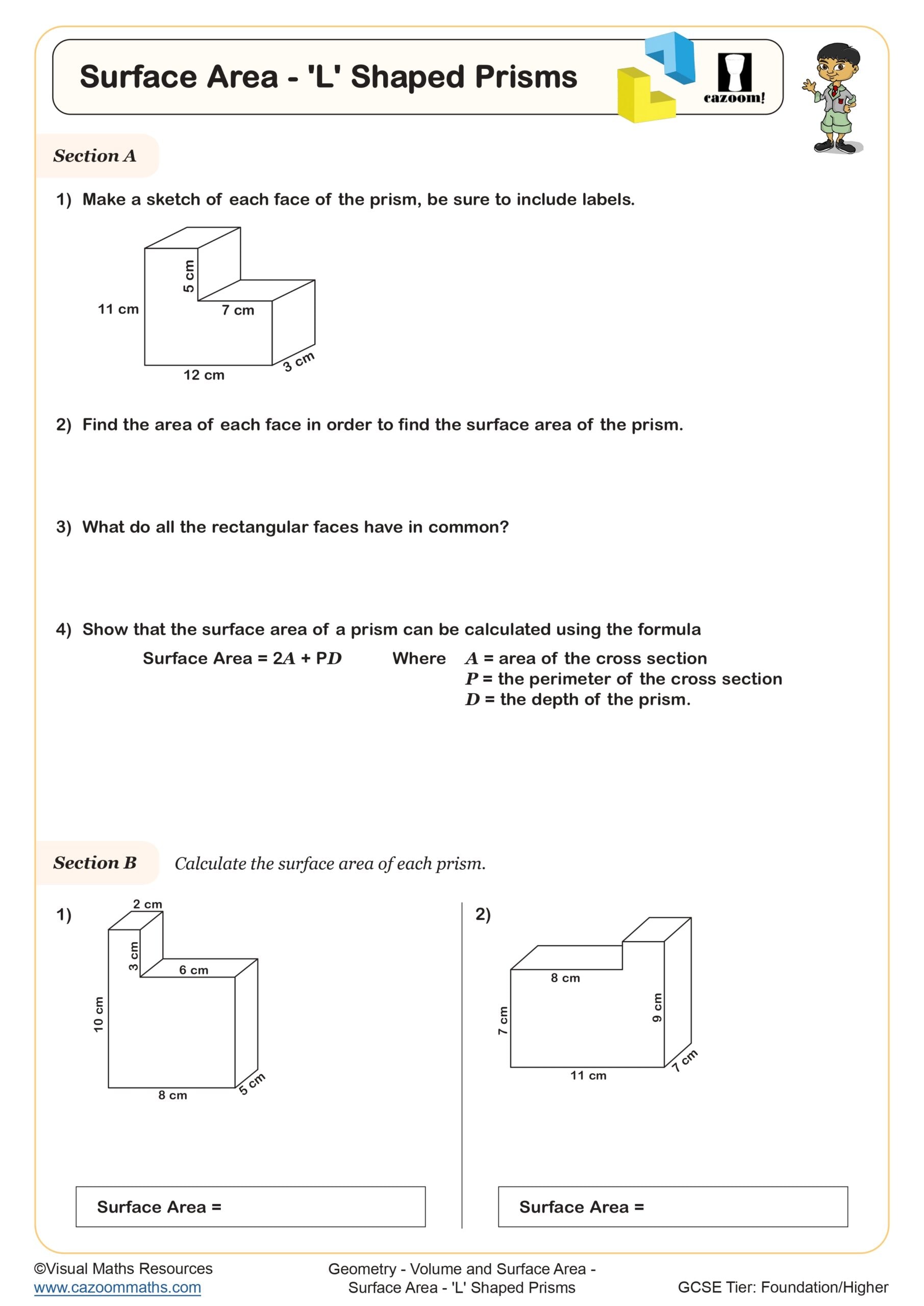
Volume of a Cylinder
Year groups: 9, 10
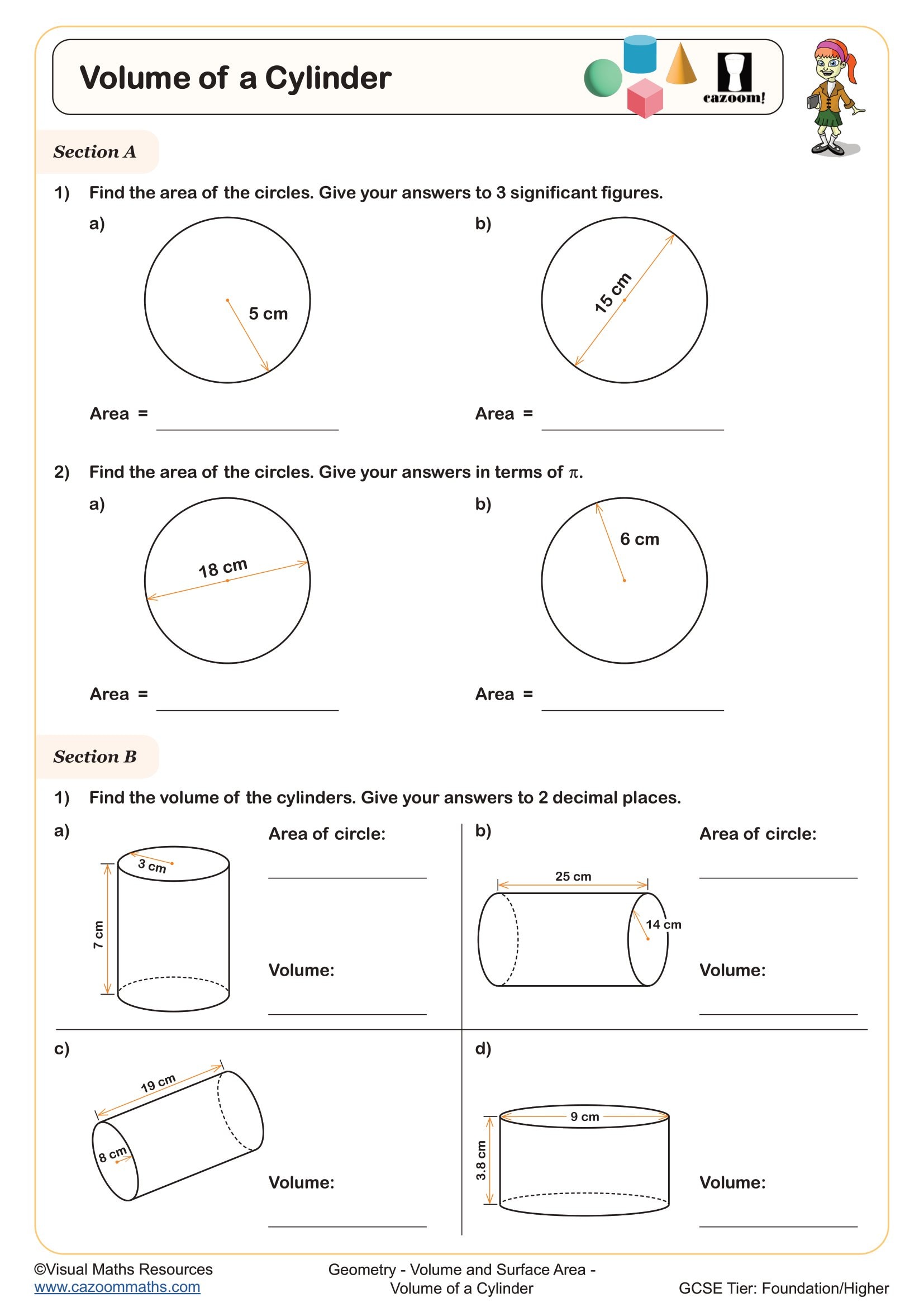
Volume of Compound 3D shapes
Year groups: 9, 10

Volume Word Problems
Year groups: 9, 10

3D Pythagoras' Theorem - Finding Volume
Year groups: 10, 11
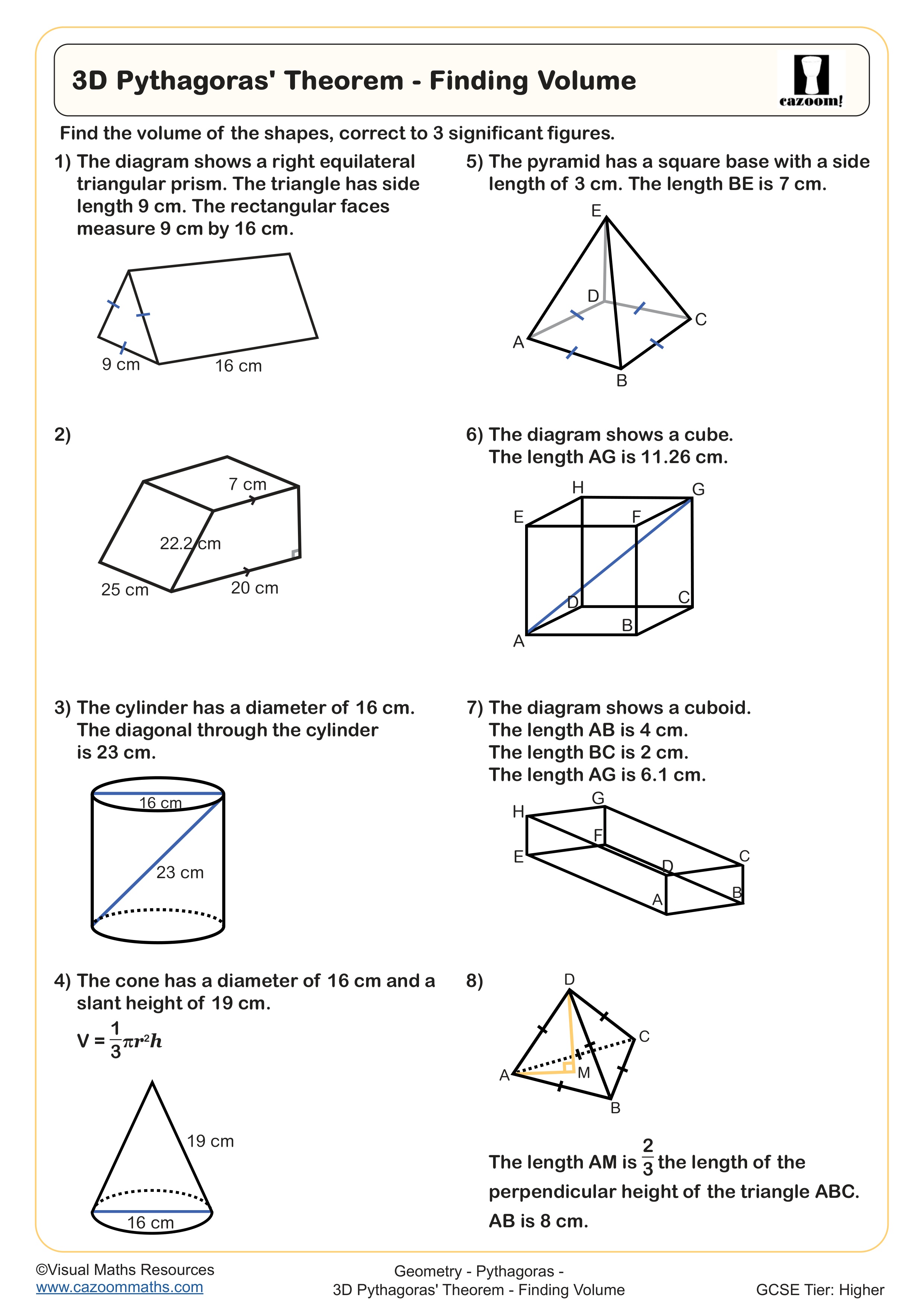
Area and Volume of Similar Shapes (A)
Year groups: 10, 11
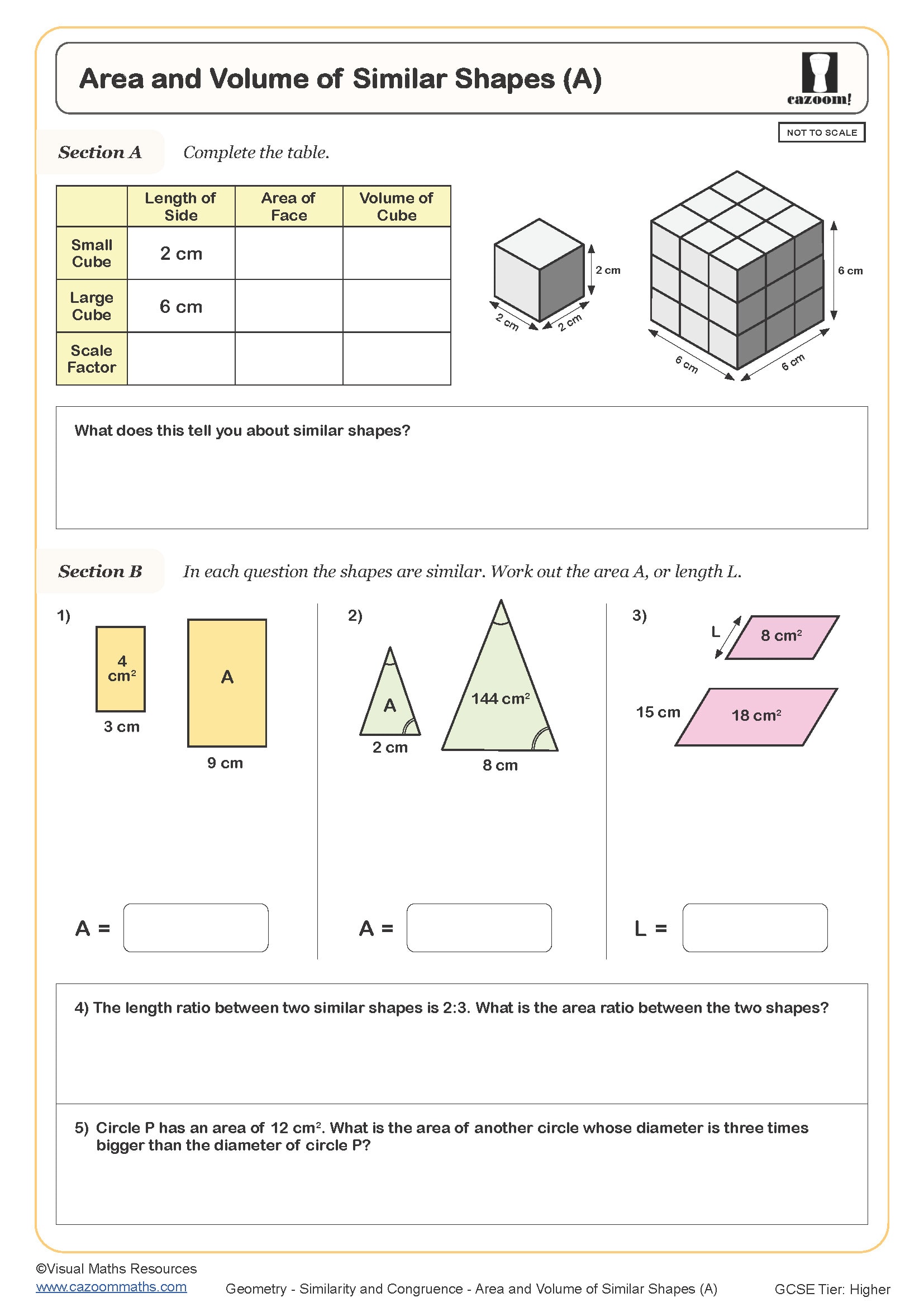
Area and Volume of Similar Shapes (B)
Year groups: 10, 11
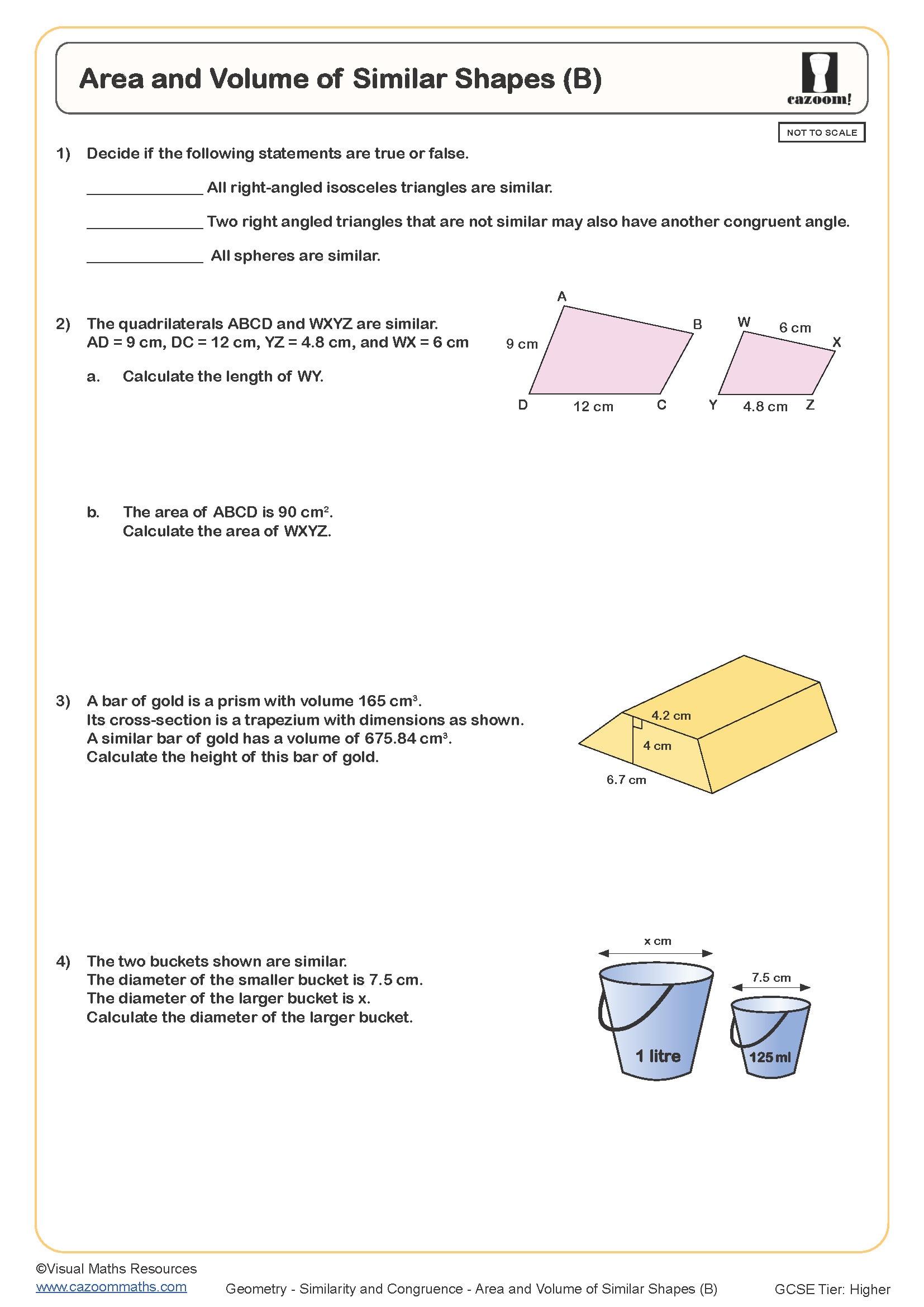
Formulae for Pyramids Cones and Spheres
Year groups: 10, 11
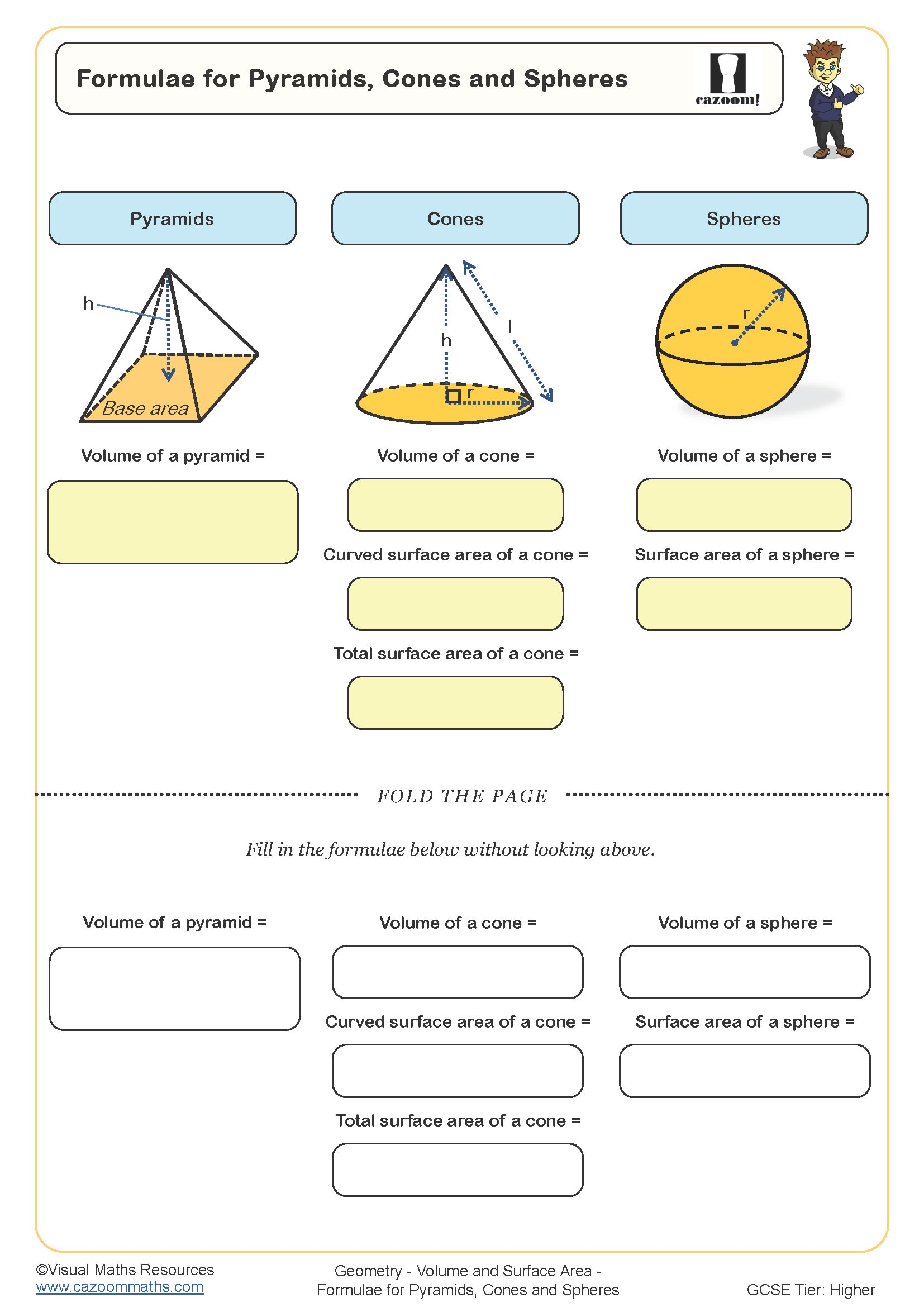
Surface Area of a Cone
Year groups: 10, 11
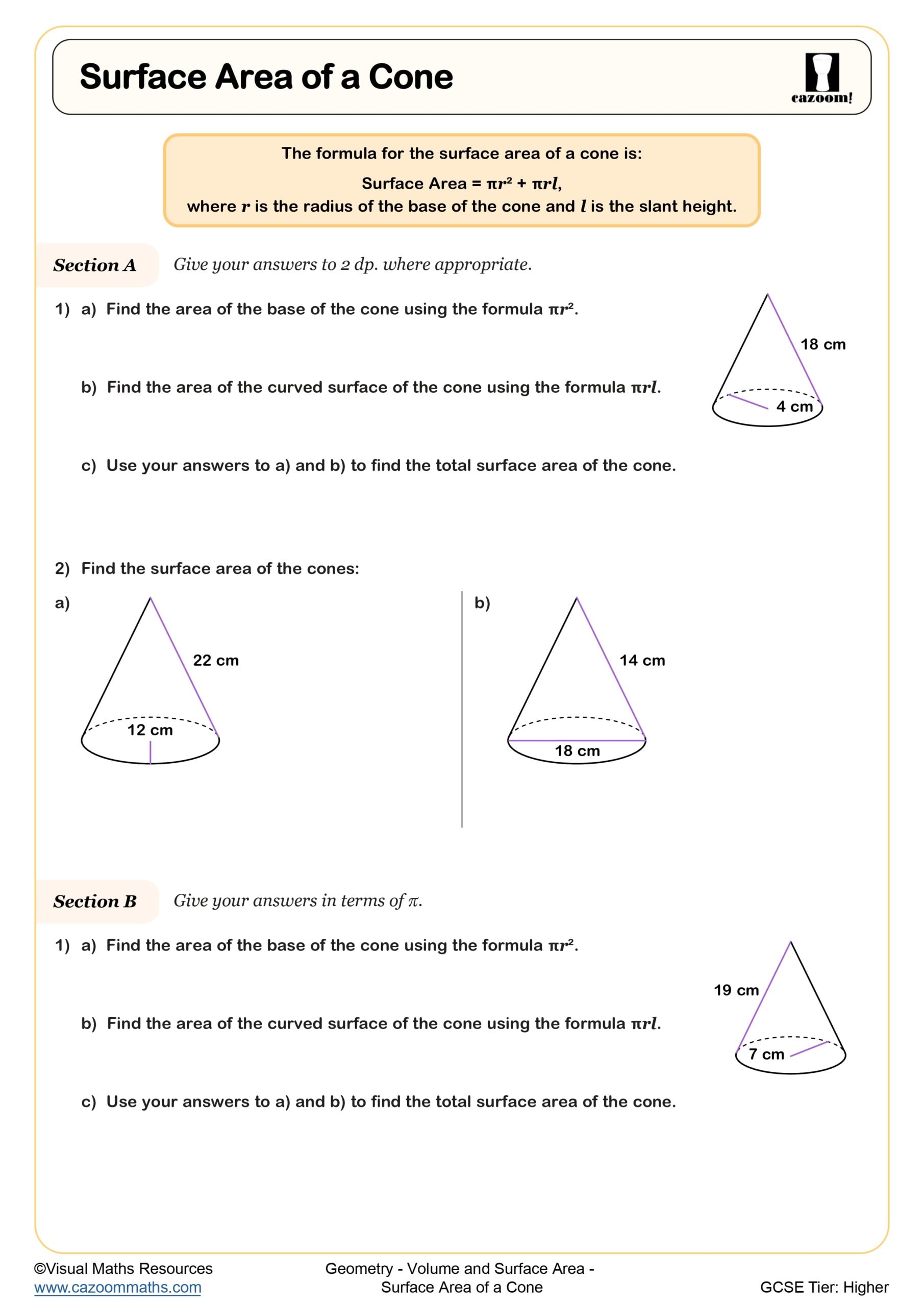
Surface Area of a Sphere
Year groups: 10, 11

Surface Area of Cones and Spheres
Year groups: 10, 11
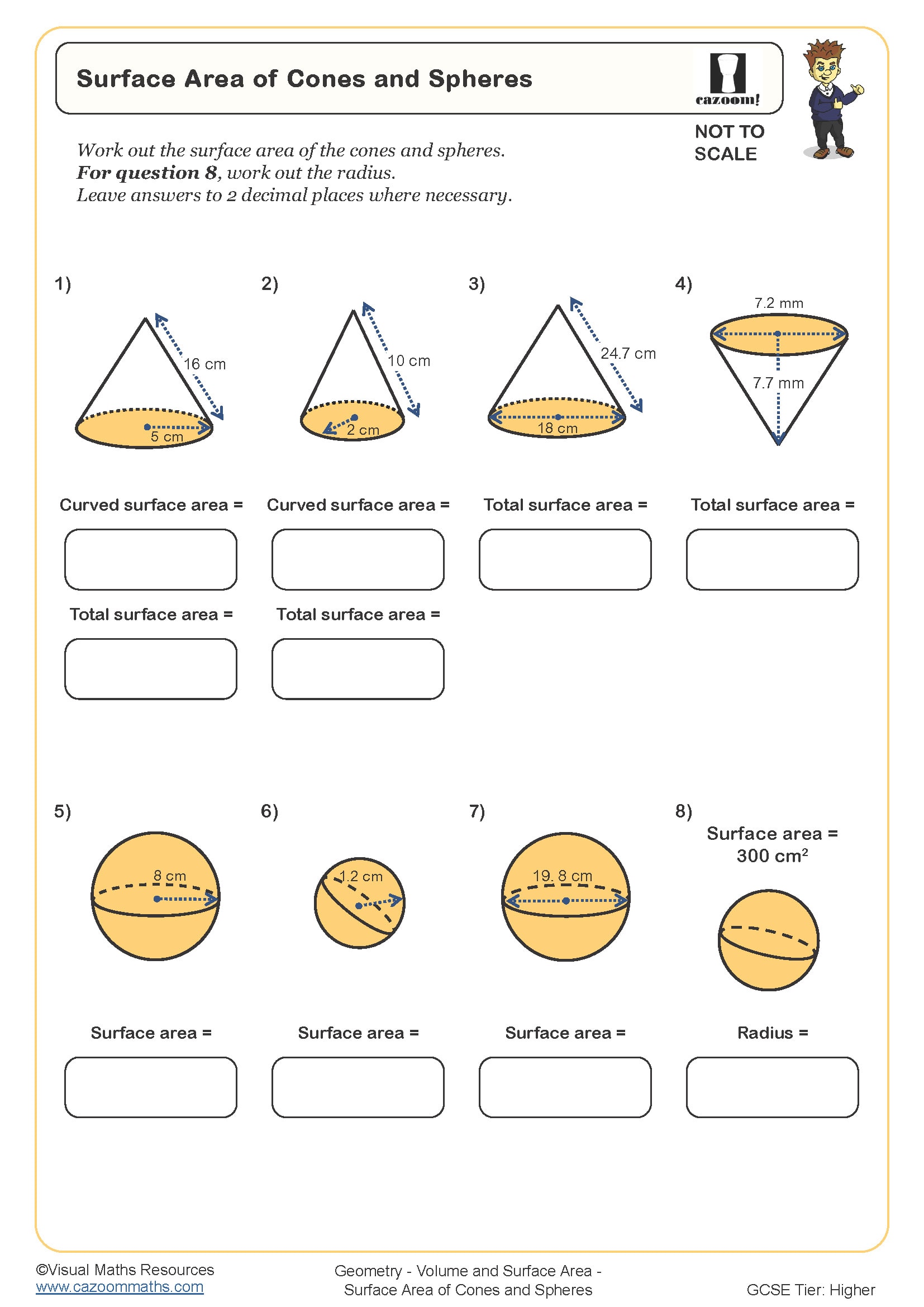
Surface Area of Conical Frustums
Year groups: 10, 11
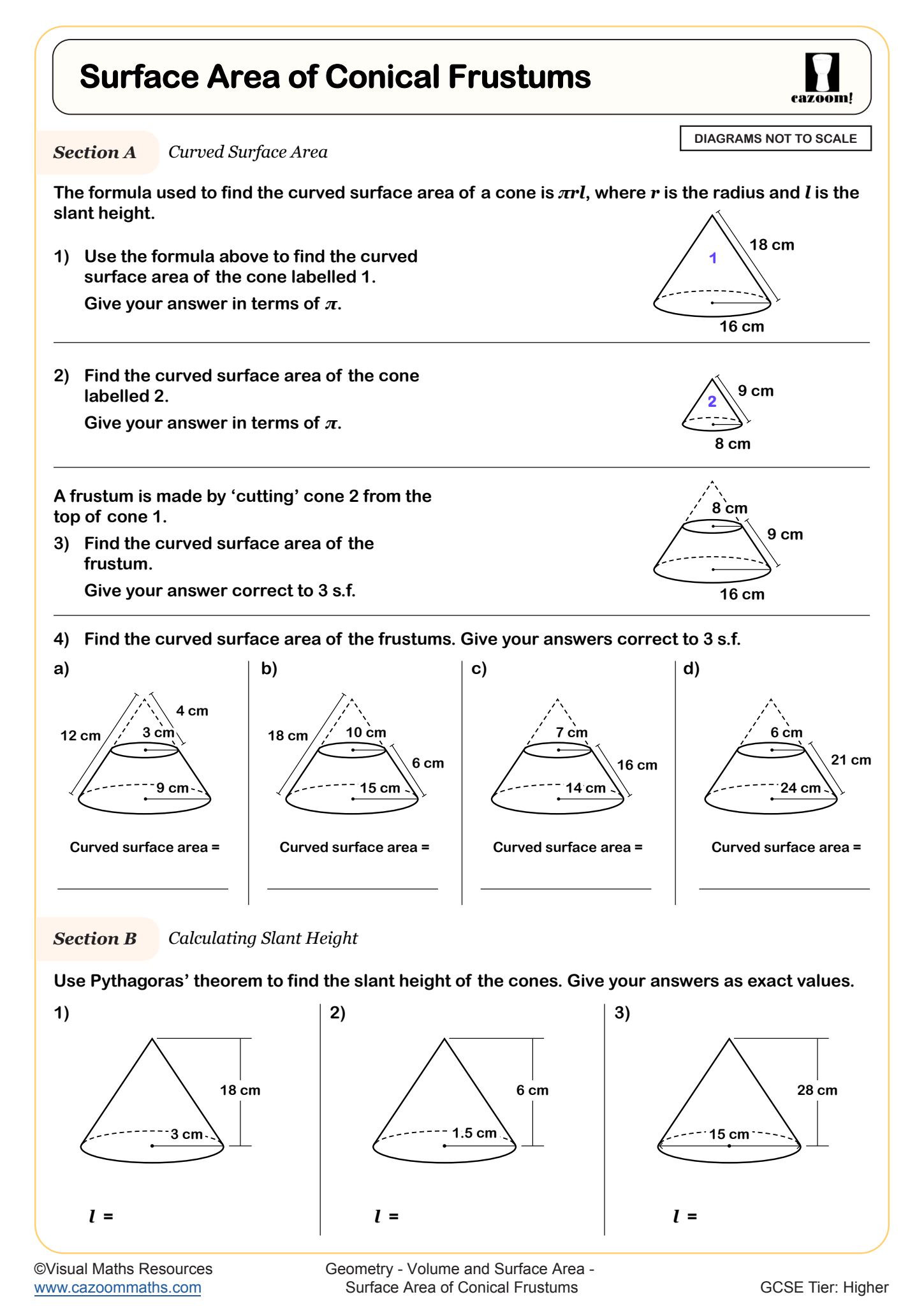
Surface Area of Pyramids
Year groups: 10, 11
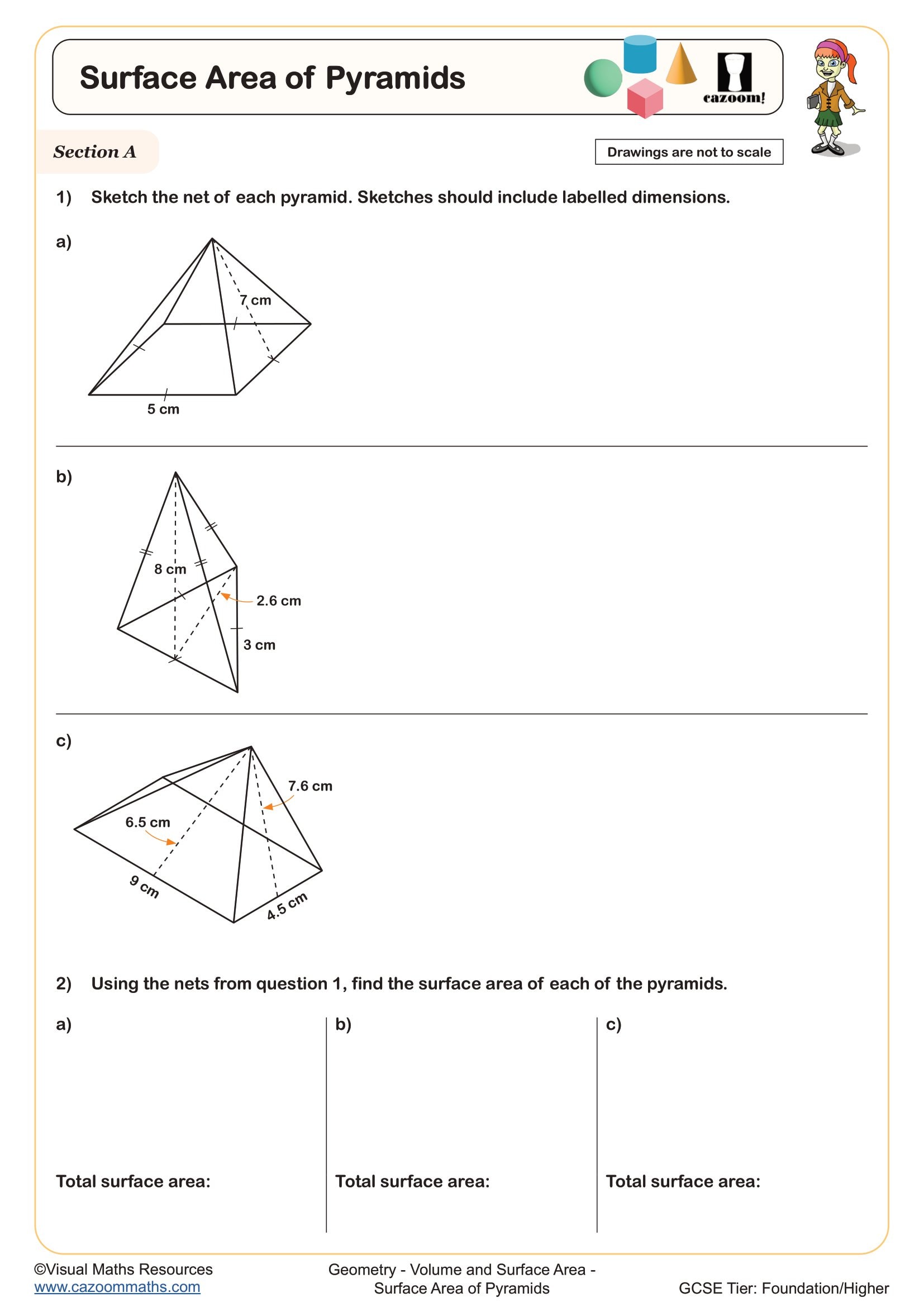
Volume and Surface Area of Cones and Spheres
Year groups: 10, 11
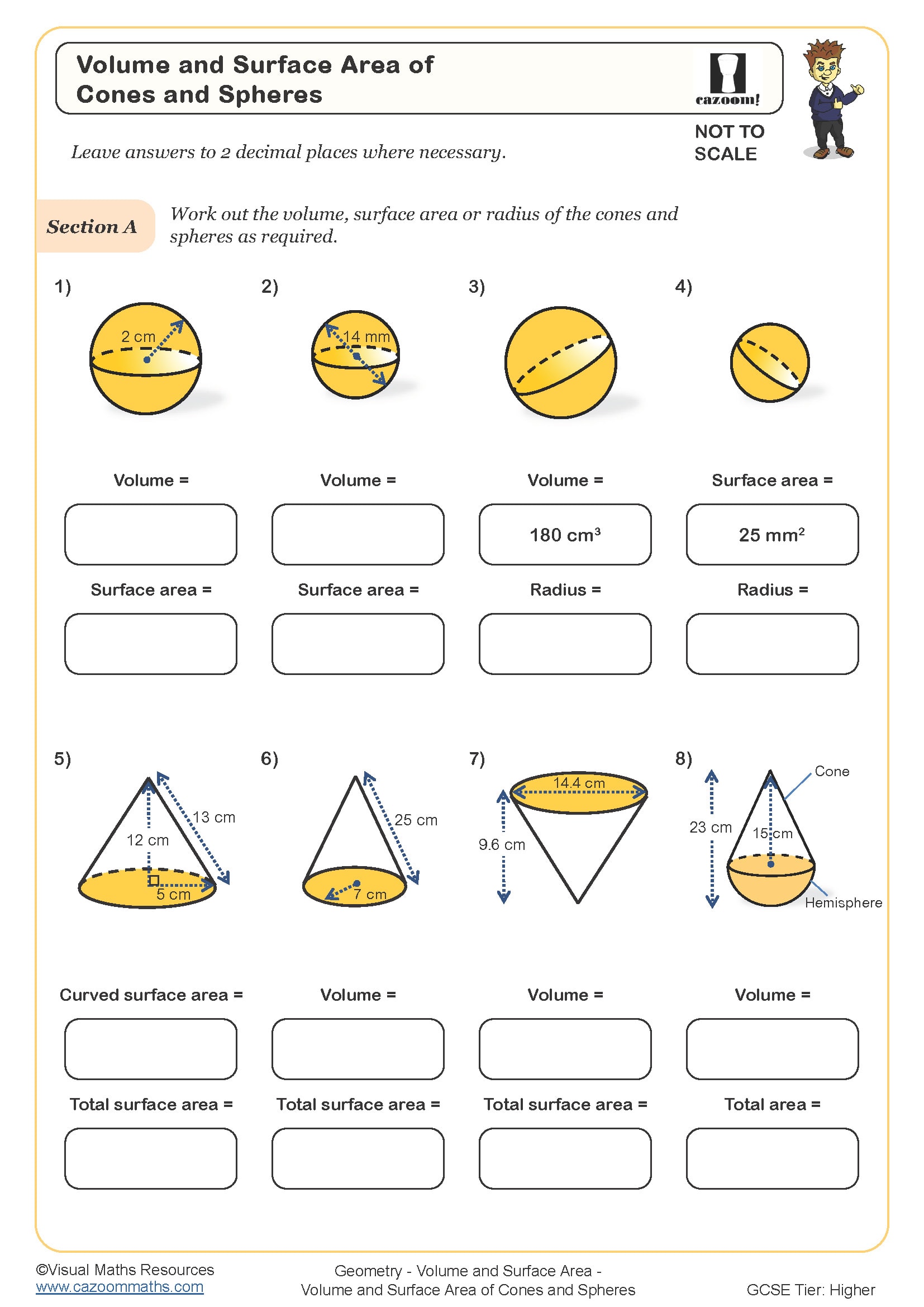
Volume of a Cone
Year groups: 10, 11
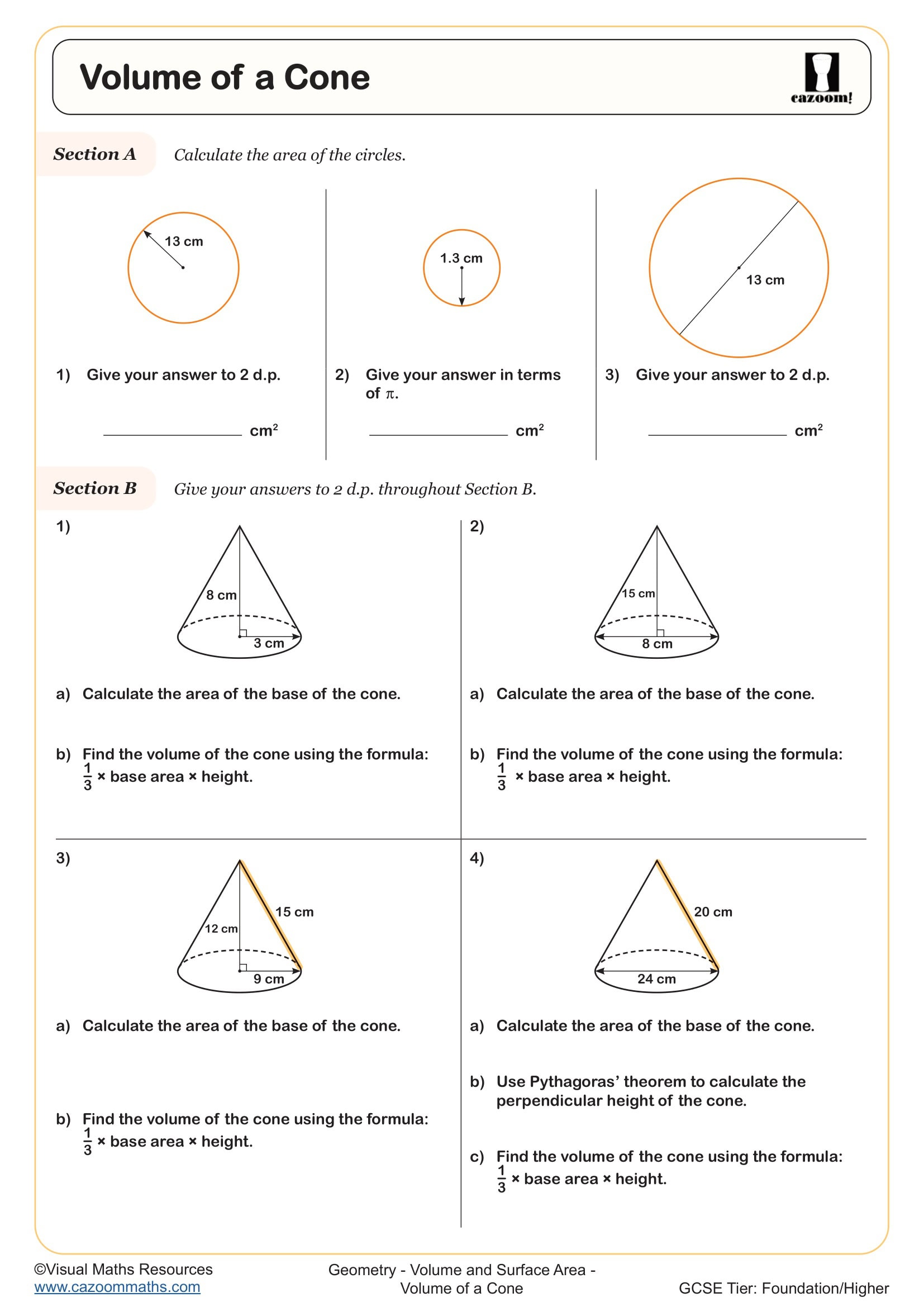
Volume of a Pyramid
Year groups: 10, 11
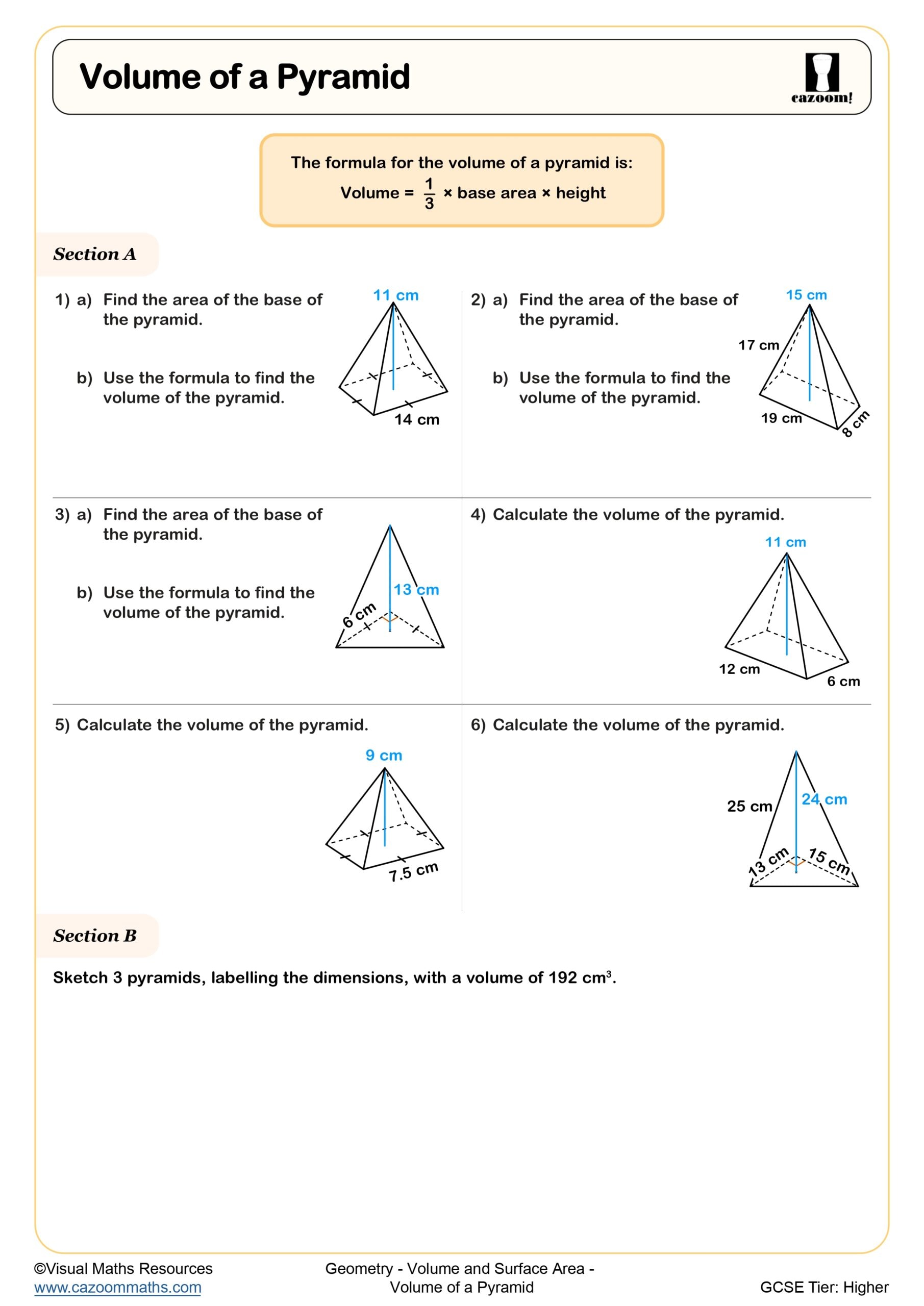
Volume of a Sphere
Year groups: 10, 11
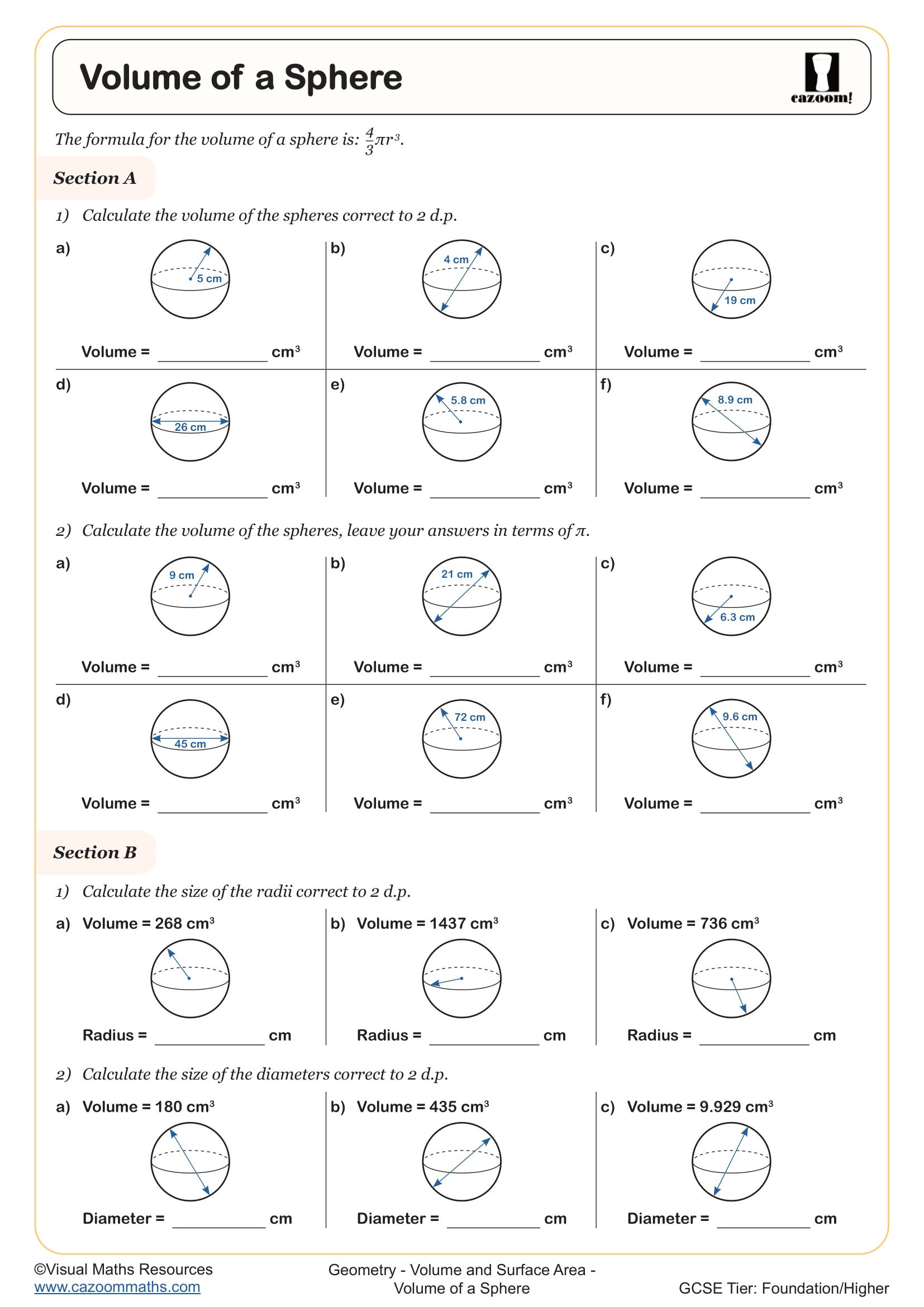
Volume of Conical Frustums
Year groups: 10, 11

Volume of Pyramids and Cones
Year groups: 10, 11

Volume of Pyramids Cones and Spheres
Year groups: 10, 11
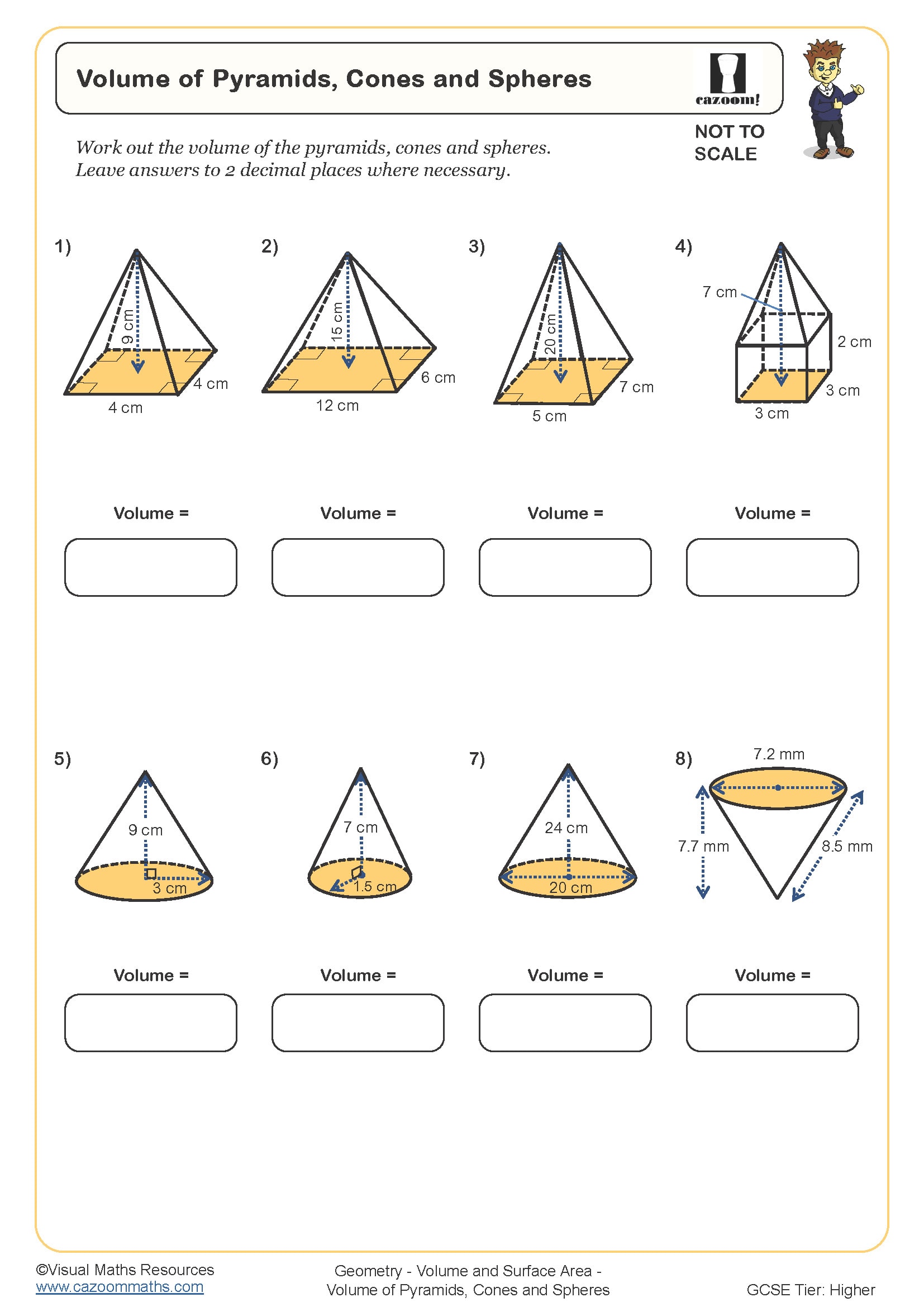
Volume of Square-based Pyramid Frustums
Year groups: 10, 11
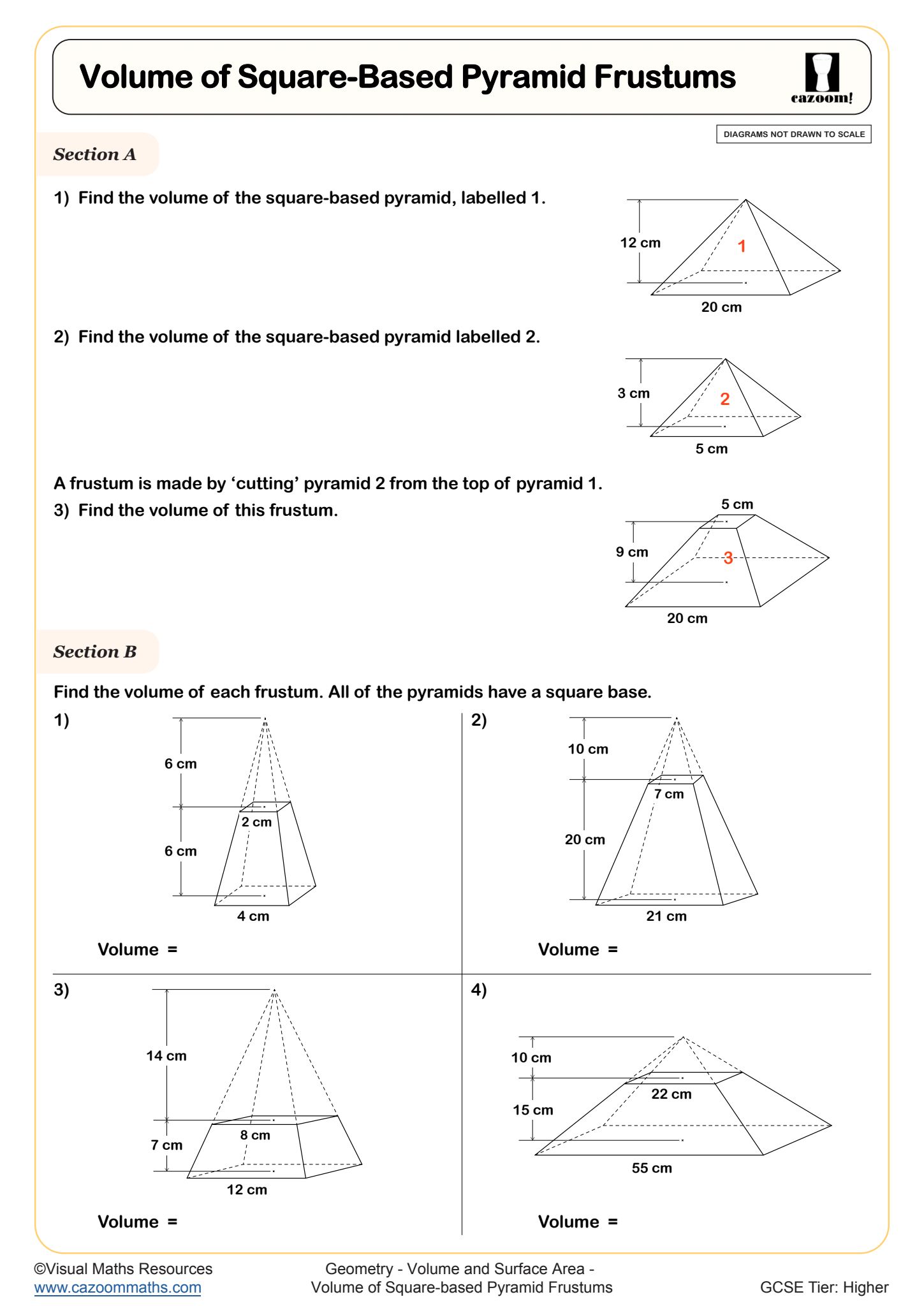
Real life applications of volume and surface area
Mastering volume and surface area calculations is a necessary skill for many different careers and activities.
In engineering, volume and area are very important. Without volume, you can’t figure out key calculations like density, for example. If you are shipping goods, and you want to know how many boxes with fit inside a container then you need to know the volume and surface area of the items involved. Surface area is even important in biology, where certain biological structures often try to maximize their surface area! The applications of volume and surface area are endless. Use our maths worksheets to master calculations such as the volume of a cylinder and the volume and surface area of other 3D shapes.
Volume and Surface area at KS3 and KS4
Volume and Surface area is a section of algebra that runs right the way through Key Stage 3 and Key Stage 4.
Year 7 students will find resources such as our volume of cuboids worksheet or our recognising prisms worksheet very relevant. Students in year 11 on the other hand will need to make use of our volume of pyramids and cones worksheet and our volume of frustrums worksheet. We have a volume and surface area worksheet for students at all levels of their KS3 and KS4 studies.